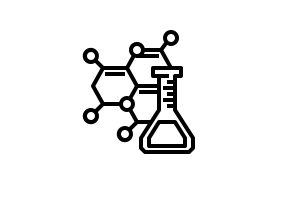Photocatalytic Reduction of CO2 by Highly Efficient Homogeneous FeII Catalyst based on 2,6-Bis(1’,2’,3’-triazolyl-methyl)pyridine. Comparison with Analogues.: Difference between revisions
 publication
publication
| About |
|---|
No edit summary |
No edit summary |
||
| Line 4: | Line 4: | ||
===Abstract=== | ===Abstract=== | ||
====Summary==== | ====Summary==== | ||
A photochemical reduction of CO<sub>2</sub> to CO was shown using the iron complex {{#moleculelink:|link=ZCGUPOIZKSBSCM-UHFFFAOYSA-N|image=false|width=300|height=200}} as catalyst in combination with the copper photosensitizer {{#moleculelink:|link=SVWABAAUBHILMW-UHFFFAOYSA-P|image=false|width=300|height=200}}. Turnover numbers (TONs) of 576 and a selectivity of 67% for CO were reached in | A photochemical reduction of CO<sub>2</sub> to CO was shown using the iron complex {{#moleculelink:|link=ZCGUPOIZKSBSCM-UHFFFAOYSA-N|image=false|width=300|height=200}} as catalyst in combination with the copper photosensitizer {{#moleculelink:|link=SVWABAAUBHILMW-UHFFFAOYSA-P|image=false|width=300|height=200}}. Turnover numbers (TONs) of 576 and a selectivity of 67% for CO were reached in MeCN/TEOA. The experiments were conducted under visible-light irradiation (λ = 420 nm) using BIH as sacrificial electron donor (see section SEDs below). | ||
====Advances and special progress==== | ====Advances and special progress==== | ||
The authors reported a iron complex with one of the highest activities for CO<sub>2</sub> reduction among earth-abundant systems with monometallic iron catalysts. | |||
====Additional remarks==== | ====Additional remarks==== | ||
In addition to the production of CO, a substantial amount of H<sub>2</sub> was formed in the reduction process with a TON of 287. | |||
===Content of the published article in detail=== | ===Content of the published article in detail=== | ||
The article contains results for the reduction of CO<sub>2</sub> to CO under visible-light catalysis using an iron complex as a catalyst. The catalytic system performs best (referring to the TON of CO production) in MeCN/TEOA. | The article contains results for the reduction of CO<sub>2</sub> to CO under visible-light catalysis using an iron complex as a catalyst. The catalytic system performs best (referring to the TON of CO production) in MeCN/TEOA. | ||
Revision as of 13:06, 14 May 2024
Abstract
Summary
A photochemical reduction of CO2 to CO was shown using the iron complex 100941 as catalyst in combination with the copper photosensitizer Molecule with key SVWABAAUBHILMW-UHFFFAOYSA-P does not exist.. Turnover numbers (TONs) of 576 and a selectivity of 67% for CO were reached in MeCN/TEOA. The experiments were conducted under visible-light irradiation (λ = 420 nm) using BIH as sacrificial electron donor (see section SEDs below).
Advances and special progress
The authors reported a iron complex with one of the highest activities for CO2 reduction among earth-abundant systems with monometallic iron catalysts.
Additional remarks
In addition to the production of CO, a substantial amount of H2 was formed in the reduction process with a TON of 287.
Content of the published article in detail
The article contains results for the reduction of CO2 to CO under visible-light catalysis using an iron complex as a catalyst. The catalytic system performs best (referring to the TON of CO production) in MeCN/TEOA.
Catalyst
Photosensitizer

Investigation
Sacrificial electron donor
In this study, the experiments were done with the sacrificial electron donor BIH (100508).
Additives
In this study, control experiments with Hg and without CO2 were conducted.
Investigations
- Optimization of CO2 reduction conditions (Molecular process, Photocatalytic CO2 conversion experiments)
- CO2 reduction experiments testing different catalysts (Molecular process, Photocatalytic CO2 conversion experiments)

